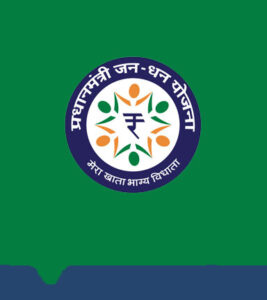Welfare schemes are programs that are meant to improve lives and provide support to vulnerable people in society
Many welfare schemes have been launched by the Modi government, including Beti Bachao-Beti Padhao, Swachh Bharat Mission, PM Mudra Yojna, Atal Pension Yojna, Smart City Scheme, and Make in India. Read on to learn about the important welfare schemes launched by Narendra Modi.
Because the central government is the welfare government, its social welfare schemes are designed to improve the general public’s well-being. There are three types of Central Government schemes. These are the “Core of Core Schemes,” “Core Schemes,” and “Major Central Sector Schemes” categories. There are approximately 6 schemes in the ‘Core of Core Schemes’ list and 28 schemes in the Core Sectors.
Some Welfare Schemes launched by Narendra Modi
- The Jan Dhan Yojna
- Skill India Mission
- Indian-made
- Mission Swachh Bharat
- Sansad Adarsh Gram Yojana
- Shramev Jayate Yojana
- Beti Bachao Beti Padhao
- PM Mudra Yojna
- Ujala Yojana
- A total pension yojna
- Jyoti Jyoti Bima Yojna
- Prime Minister Ujjwala’s Plan
- Smart city initiative
- SATAT Scheme
- Mission for Digital India
- UDAY
- Start-up India
- Setu Bhartam Yojna
- Stand Up, India!
- Namami Gange Yojana
- The Pradhan Mantri Suraksha Bima Yojana






Pradhan Mantri Jan Dhan Yojana (PMJDY)

Introduction
Pradhan Mantri Jan Dhan Yojana (PMJDY), launched on August 28, 2014, by the Government of India, is a landmark financial inclusion program aimed at providing affordable access to various financial services to all citizens. This scheme was initiated to eradicate financial untouchability and ensure that every Indian household has access to a bank account.
Key Objectives:
-
Universal Access to Banking: PMJDY's primary goal is to ensure that every Indian has a bank account, promoting the concept of financial inclusion.
-
Financial Literacy: The scheme promotes financial literacy and awareness among the economically weaker sections, empowering them to make informed financial decisions.
-
Access to Credit: PMJDY facilitates access to credit and overdraft facilities for account holders, enabling them to meet their credit needs.
-
Insurance Coverage: The scheme provides accidental insurance coverage and life insurance to account holders, offering financial security to their families.
-
Direct Benefit Transfer (DBT): PMJDY accounts are used for efficient and transparent disbursal of government subsidies and benefits directly to beneficiaries.
Achievements
Since its inception, PMJDY has made significant strides in enhancing financial inclusion in India. Millions of previously unbanked individuals now have access to banking services. Over 40 crore Jan Dhan accounts have been opened, with substantial deposits and balances. The scheme has played a pivotal role in promoting financial literacy, reducing leakages in government welfare programs, and fostering economic empowerment among marginalized communities.
Challenges and Future Scope:
Despite its success, PMJDY faces challenges such as low account activity and the need for continuous financial education. To further its objectives, the government must focus on improving account usage, expanding digital banking infrastructure, and deepening financial literacy initiatives.
Conclusion
Pradhan Mantri Jan Dhan Yojana is a transformative initiative that has made significant strides in promoting financial inclusion and economic empowerment among India's marginalized populations. As it continues to evolve, the scheme holds the potential to drive financial stability and prosperity for millions of Indians, making it a pivotal component of the country's socio-economic development.
Pradhan Mantri Jeevan Jyoti Bima Yojana (PMJJBY)

Introduction
Pradhan Mantri Jeevan Jyoti Bima Yojana (PMJJBY), launched by the Government of India on May 9, 2015, is a social security and insurance scheme designed to provide affordable life insurance coverage to all eligible individuals in the country. PMJJBY aims to ensure that even economically vulnerable segments of the population have access to financial protection in case of an unfortunate event.
Key Objectives
Widespread Coverage: PMJJBY seeks to extend life insurance coverage to a large section of the population, including those who may not have easy access to insurance services otherwise.
Affordability: The scheme offers life insurance at an affordable premium, making it accessible to low-income individuals and families.
Financial Security: PMJJBY provides financial security to the insured individual's family in case of their untimely demise, offering peace of mind and economic stability during difficult times.
Salient Features
Eligibility: Any individual between 18 and 50 years of age with a bank account can enroll in PMJJBY.
Premium: The annual premium is minimal, making it affordable for a wide range of income groups.
Coverage Amount: In the event of the insured's death, the nominee receives a fixed sum assured, which is currently set at ₹2 lakh.
Enrollment Period: Individuals can join the scheme during the annual enrollment period specified by the government.
Achievements
Since its launch, PMJJBY has witnessed significant participation, with millions of individuals enrolling in the scheme across India. It has provided a safety net for families, especially those in rural and economically weaker areas, ensuring that they have financial support during challenging times.
Challenges and Future Scope
To further enhance the effectiveness of PMJJBY, the government needs to focus on increasing awareness and enrollment, particularly among underserved populations. Continuous monitoring and improvements in the scheme's administration are also essential.
Conclusion
Pradhan Mantri Jeevan Jyoti Bima Yojana plays a crucial role in extending financial protection and security to a broad spectrum of the Indian population. By offering affordable life insurance, PMJJBY not only safeguards the future of individuals and their families but also contributes to the overall economic stability of the nation. It remains an essential component of the government's efforts to promote social and financial inclusion.
Pradhan Mantri Suraksha Bima Yojana (PMSBY)

Introduction
Pradhan Mantri Suraksha Bima Yojana (PMSBY), launched on May 9, 2015, by the Government of India, is a government-backed accident insurance scheme designed to provide affordable personal accident coverage to all eligible individuals in the country. PMSBY aims to ensure that even economically vulnerable segments of the population have access to financial protection in case of accidental injuries or death.
Key Objectives
-
Universal Coverage: PMSBY aims to provide accident insurance coverage to a vast section of the population, including those who may not typically have access to insurance services.
-
Affordability: The scheme offers personal accident insurance at an extremely low premium, making it accessible to low-income individuals and families.
-
Financial Protection: PMSBY provides financial support in the event of accidental death or disability, offering a crucial safety net during challenging times.
Salient Features
Eligibility: Any individual aged 18 to 70 years with a savings bank account can enroll in PMSBY.
Premium: The annual premium for PMSBY is nominal, making it one of the most affordable insurance schemes in the country.
Coverage Amount: In case of accidental death, the nominee receives a sum assured of ₹2 lakh, while in the case of permanent disability, the insured is eligible for a similar amount.
Achievements
Since its inception, PMSBY has witnessed substantial enrollment, with millions of individuals availing the benefits of this accident insurance scheme across India. It has offered financial security to individuals and their families during unforeseen accidents, especially in rural and economically disadvantaged areas.
Challenges and Future Scope
To further enhance the effectiveness of PMSBY, the government needs to focus on increasing awareness and enrollment, especially among underserved populations. Continuous monitoring and improvements in the scheme's administration are also crucial.
Conclusion
Pradhan Mantri Suraksha Bima Yojana serves as a vital safety net by offering affordable accident insurance to a broad spectrum of the Indian population. It not only provides financial protection but also contributes to the overall economic well-being of individuals and their families. PMSBY remains a pivotal component of the government's efforts to promote social and financial inclusion while ensuring that every citizen has access to essential financial security in times of need.
Atal Pension Yojana (APY)

Introduction
Atal Pension Yojana (APY), launched by the Government of India on May 9, 2015, is a social security scheme aimed at providing affordable and guaranteed pension benefits to Indian citizens, especially those working in the unorganized sector. APY seeks to ensure financial security during old age by encouraging individuals to save for their retirement.
Key Objectives
-
Universal Pension Coverage: APY's primary goal is to extend pension coverage to all citizens, including those who are not covered by any formal pension scheme.
-
Affordability: The scheme offers affordable contribution amounts, making it accessible to individuals with varying income levels.
-
Guaranteed Pension: APY provides a guaranteed monthly pension to subscribers, ensuring financial stability during their retirement years.
Salient Features
Eligibility: Any Indian citizen between the ages of 18 to 40 years can join APY.
Contributions: The monthly contribution amount depends on the age at which a person joins the scheme and the desired pension amount.
Pension Amount: Subscribers are eligible to receive a fixed monthly pension ranging from ₹1,000 to ₹5,000, depending on their contributions.
Government Contribution: For eligible subscribers in the unorganized sector, the government co-contributes 50% of the subscriber's contribution or ₹1,000 per year, whichever is lower, for a period of 5 years.
Achievements
APY has garnered significant participation since its inception, with millions of subscribers from diverse backgrounds enrolling in the scheme. It has played a crucial role in promoting financial discipline and ensuring that individuals have a stable source of income during their retirement years.
Challenges and Future Scope
To further enhance the reach and effectiveness of APY, the government needs to focus on increasing awareness, improving the digital infrastructure for enrollments, and addressing issues related to the informal workforce.
Conclusion
Atal Pension Yojana is a landmark initiative that addresses the need for financial security in old age. By offering affordable and guaranteed pension benefits, APY empowers individuals to plan for their retirement and ensures that they can maintain a decent standard of living even after they stop working. It remains a critical component of the government's efforts to promote financial inclusion and social security for all citizens.
Pradhan Mantri Mudra Yojana

Introduction
Atal Pension Yojana (APY), launched by the Government of India on May 9, 2015, is a social security scheme aimed at providing affordable and guaranteed pension benefits to Indian citizens, especially those working in the unorganized sector. APY seeks to ensure financial security during old age by encouraging individuals to save for their retirement.
Key Objectives
-
Universal Pension Coverage: APY's primary goal is to extend pension coverage to all citizens, including those who are not covered by any formal pension scheme.
-
Affordability: The scheme offers affordable contribution amounts, making it accessible to individuals with varying income levels.
-
Guaranteed Pension: APY provides a guaranteed monthly pension to subscribers, ensuring financial stability during their retirement years.
Salient Features
Eligibility: Any Indian citizen between the ages of 18 to 40 years can join APY.
Contributions: The monthly contribution amount depends on the age at which a person joins the scheme and the desired pension amount.
Pension Amount: Subscribers are eligible to receive a fixed monthly pension ranging from ₹1,000 to ₹5,000, depending on their contributions.
Government Contribution: For eligible subscribers in the unorganized sector, the government co-contributes 50% of the subscriber's contribution or ₹1,000 per year, whichever is lower, for a period of 5 years.
Achievements
APY has garnered significant participation since its inception, with millions of subscribers from diverse backgrounds enrolling in the scheme. It has played a crucial role in promoting financial discipline and ensuring that individuals have a stable source of income during their retirement years.
Challenges and Future Scope
To further enhance the reach and effectiveness of APY, the government needs to focus on increasing awareness, improving the digital infrastructure for enrollments, and addressing issues related to the informal workforce.
Conclusion
Atal Pension Yojana is a landmark initiative that addresses the need for financial security in old age. By offering affordable and guaranteed pension benefits, APY empowers individuals to plan for their retirement and ensures that they can maintain a decent standard of living even after they stop working. It remains a critical component of the government's efforts to promote financial inclusion and social security for all citizens.






